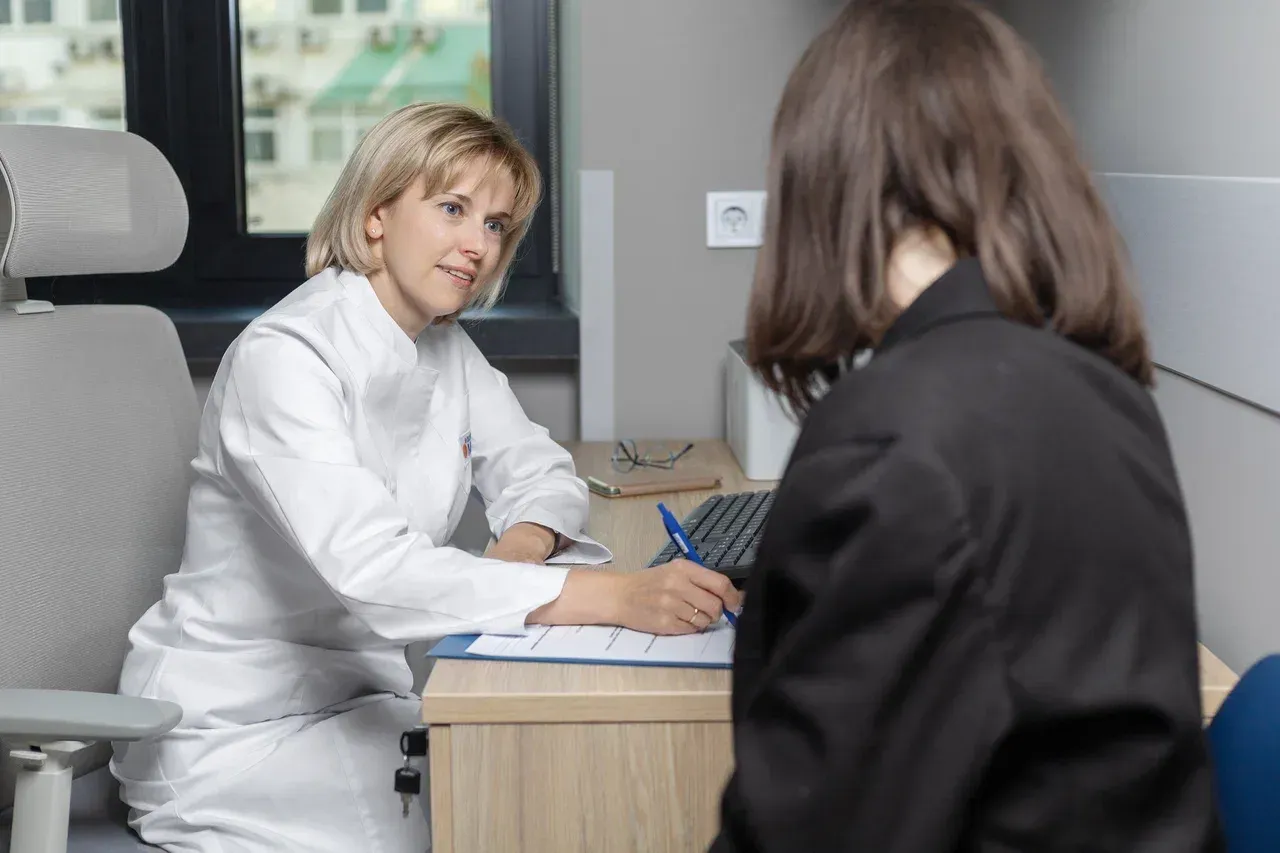Peptic ulcer disease
A chronic disease in which an ulcer forms in the wall of the stomach or duodenum (duodenum).

Peptic ulcer disease develops due to an imbalance between aggressive factors (hydrochloric acid, bile components) and the protective mechanisms of the gastric mucosa and duodenum. Normally, the stomach produces a protective layer of mucus that neutralizes the effects of acid. However, if this mechanism fails, inflammation occurs, which can develop into an ulcer. The disease is often associated with the bacterium Helicobacter pylori, which damages the mucous membrane and provokes inflammation. Ulcers can be localized in different parts of the stomach or duodenum, which affects the nature of the symptoms. For example, with ulcers in the upper stomach, pain occurs immediately after eating, and with ulcers of the duodenum — after 2-3 hours or on an empty stomach.
Causes
Infection with Helicobacter pylori.
Hereditary predisposition.
Long-term use of nonsteroidal anti-inflammatory drugs (NSAIDs), anabolic steroids, cytostatics.
Stress factors (burns, traumatic brain injuries, neurosurgery).
Smoking and alcohol abuse.
Symptoms
Intense pain in the epigastric region that occurs after eating or on an empty stomach.
Heaviness in the stomach, independent of the volume of food.
Heartburn and belching of acidic contents.
Nausea, sometimes vomiting.
Bitterness in the mouth.
Nocturnal pain (typical for duodenal ulcers).
After-effects
Perforation of the stomach wall or duodenum causes acute pain and requires immediate surgical intervention. Penetration (penetration of ulcers into neighboring organs) can lead to inflammation of the pancreas or liver.
Massive bleeding is manifested by vomiting with blood, black stools and a sharp deterioration in the condition (weakness, dizziness, decreased blood pressure). Stenosis (narrowing) of the passage from the stomach to the duodenum makes it difficult for food to pass through, causing constant heaviness and vomiting. In rare cases, the ulcer can become malignant, leading to the development of stomach cancer.
Лечение

Conservative treatment
When Helicobacter pylori is detected, antibacterial therapy is prescribed in combination with drugs that inhibit the production of hydrochloric acid (proton pump inhibitors). Diet plays an important role: nutrition should be fractional, with the exception of spicy, fried and smoked foods. It is recommended to avoid stress, give up smoking and alcohol. Probiotics may be prescribed to restore intestinal microflora after antibiotics.

Surgical treatment
Surgical intervention is required for complications such as perforation, penetration, or massive bleeding. During the operation, the surgeon removes the damaged area and restores the integrity of the stomach wall or duodenum. In the case of stenosis, the narrowed area may be expanded. After surgery, the patient should be regularly monitored by a gastroenterologist to prevent recurrence.
Schedule a visit to the clinic
How to reach
Moscow, 1st Yamskogo Polya Street, 15
Mon–Sun Around the clock
+7 495 255-50-03
How to get
From the Belorusskaya metro station of the Zamoskvoretskaya line - exit 4 After exiting the subway, walk through the pedestrian tunnel and climb the stairs. Move towards the railway tracks, go down the stairs immediately after them and walk along the house, then turn right onto 1st Yamskoye Pole Street. At the turn to 3rd Yamsky Pole Street, cross the road at the pedestrian crossing and continue along 1st Yamsky Field Street, after a few buildings on the left you will see Olympus Clinic MARS.
Travel time
9 minutes
Landmark
Olympus Clinic MARS sign
How to get
From the Belorusskaya metro station of the Ring line - exit 2. After exiting the subway, turn left and walk to the pedestrian crossing. Cross the road through two pedestrian crossings and move along the Tverskoy overpass. Go down the stairs immediately after the railway tracks, walk along the house, then turn right onto 1st Yamskoye Pole Street. At the turn to 3rd Yamsky Pole Street, cross the road at the pedestrian crossing and continue along 1st Yamsky Field Street, after a few buildings on the left you will see Olympus Clinic MARS
Travel time
11 minutes
Landmark
Olympus Clinic MARS sign


